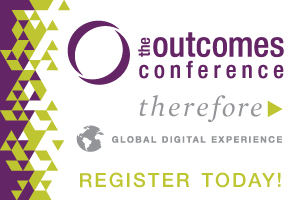
Find the Best Digital Giving Solution By Leighton Cusack
Discover how to find the best digital giving solution for your church.
Digital giving is more important to churches than ever before. In the 21st century, not having a digital giving solution is like not accepting cash offerings.
Chances are your church already knows that and you’re facing this question:
Which digital giving solution is the best one for my church?
As you start researching, you’ll find it’s a difficult question to answer. There are many companies offering different services and the prices are all over the map.
As the co-founder of Kindrid, I got involved in digital giving because I care about generosity and believe giving technology matters. I often interact with churches confused about what the differences are, which options are best for them, and how they should decide.
Here are two critical questions your church should consider before picking an option:
What’s the bottom line price?
With any option you consider, start by determining the bottom line price. This can be a difficult question to answer since many companies intentionally structure their pricing to avoid comparison.
Important questions to ask:
- What’s the monthly fee to use the service?
- What’s the processing cost per transaction?
- What types of cards does the processing cost cover? Is it the same for all types of cards?
- Is there a separate merchant account monthly fee?
- Is there a separate merchant account transaction fee?
- Are there set up costs?
- Are there extra fees to use certain giving features?
- Are there contracts or cancellation costs?
- Once you answer these questions, you’ll be in a better position to understand what the true bottom line cost of the giving solution will be to your church. The general guidelines below may help.
General guidelines to follow:
- No matter the size of your church, try not to pay more than 2.9% + .30 per credit or debit card transaction for all types of cards.
- If your church is processing more than $100,000/mo., expect your total processing fees to be much lower than 2.9% + .30 per transaction.
- If you’re accepting ACH, don’t pay more than 1% per transaction.
- No contracts and no cancellation fees are standard (both for the merchant service provider and for the giving software).
- You shouldn’t have to pay a separate monthly fee for a merchant service provider.
- You shouldn’t have to pay a separate percentage transaction fee to the software provider.
- If you are footing a monthly fee, expect things like implementation support, customer support, and church specific features (like software integrations) to be included.
Navigating the bottom line is important stewardship, but the real exponential opportunity with digital tools is in growing total engagement. Let’s turn to top line impact now and take a closer look.
What’s the top line impact?
When adopting a new digital giving tool, it’s always with the goal of simplifying processes and increasing total engagement. A giving tool shouldn’t just redirect existing dollars but help your church grow too.
Look for a digital giving solution proven to increase new givers
By way of example, increasing your givers* by 10% wields a $2,000/mo. increase in giving. While it seems like reducing your processing cost by 10% might have a bigger impact, it only ends up saving $50 in comparison.
The technology you use, how it integrates with your existing systems, and how well it’s supported, all matter. This can be difficult to capture in a pricing plan or a comparison chart, but there are a few things to consider.
*Assuming your church receives $20,000/mo. in digital giving with a 2.5% + .30 per gift fee.
Important questions to ask:
- Is the service built around facilitating payments or gifts?
- How does the service help with rollout and implementation?
- What does support look like 6 months after sign up?
- Does the provider have a record of serving churches well?
- Are there any additional costs associated with this support or these features?
General guidelines to follow:
- Your solution should have a robust online and mobile giving component.
- Your solution should treat your giving as gifts and not transactional payments.
- Your solution should provide simple accounting and administrative tools.
- Your solution should provide helpful support and rollout guidance.
- Your solution should be customized for your church brand.
None of the above should have any additional costs associated with them.
Which digital giving solution is right for you?
In short, be good stewards of the bottom line cost, but also be aware that sometimes you get what you pay for and there is significant impact that comes from investing in good tools.
####
As the co-founder and CVO of Kindrid, Leighton Cusack is passionate about reengaging churches in the generosity discussion and equipping them to give through Smart Giving.
Hello Mentoring Monday
Mentoring Monday means leaders can now submit their personal profiles every Monday to become a mentor or mentee on Christian Leadership Alliance’s Outcome Mentoring Network. If you are compelled to engage in a life-changing mentoring relationship, the door of opportunity opens every Monday for you.
Discover what God will do when you invest time 1:1 with another Christ-centered leader.
 www.OutcomesMentoring.org
www.OutcomesMentoring.org

What is Christian Leadership Alliance?
Christian Leadership Alliance equips and unites leaders to transform the world for Christ. We are the leaders of Christ-centered organizations who are dedicated to faithful stewardship for greater kingdom impact.
Sign up for FREE blog updates.
Upcoming Events
Check back later!



